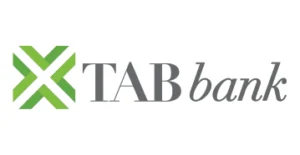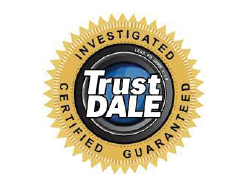
Use this guide to track call center metrics and ensure your call center leaves customers feeling heard, valued, and eager to return. These key performance indicators (KPIs) are your key to understanding what’s working, what’s not, and how to make meaningful improvements that benefit everyone.
In this guide, we’ll explain the essential metrics clearly and easily. We’ll explain their meaning, why they matter, and how you can use them to make informed decisions that drive positive change.
Reference: Barron, S. (September 25, 2023). “KPIs: What Are Key Performance Indicators? Types and Examples” Investopedia.

Call center metrics empower managers to elevate customer experience, empower agent performance, optimize resource allocation, and streamline operations. These 8 essential KPIs are a powerful toolkit for achieving operational excellence.
Minimize missed opportunities by ensuring your infrastructure and staffing can handle peak call volumes. To calculate a blocked call rate for call center metrics, divide the number of blocked calls by the total number of calls and multiply by 100.
Analyze and Take Action: Use data to identify trends and potential issues. If you see a high blocked calls rate, it’s a sign that you need to address capacity issues, potentially by:
Increasing staffing levels during peak hours: Ensure you have enough agents available to handle the call volume.
Optimizing call routing: Distribute calls efficiently to available agents to reduce wait times and prevent calls from being blocked.
Upgrading your call center infrastructure: If your system is reaching its capacity, consider upgrading to a solution that can handle a higher volume of calls.
Check out this article by The Lee Group, “Balancing Seasonal Demands: Staffing Strategies for Peak and Off-Peak Periods.“
Optimize call routing and staffing to reduce wait times and the number of customers hanging up, this is key factor in call center metrics.
Identify peak times and days: Analyze call volume and abandonment rates by time and day of the week to pinpoint periods with high call volumes and abandonment rates.
Assess call routing effectiveness: Analyze abandonment rates by call reason or department to see if certain types of calls or departments are experiencing higher abandonment rates, which could indicate issues with call routing.
Evaluate staffing levels: Compare agent occupancy rates and call volumes to determine if staffing levels are adequate to handle call volumes, especially during peak times.
Correlate queue times and abandonment: Analyze the relationship between queue times and abandonment rates to understand the impact of wait times on customer behavior.
Balance efficiency with comprehensive solutions, using analysis to identify training and process improvement areas.
Identify outliers: Look for calls with unusually long or short durations. Long calls might indicate complex issues or inefficient processes, while short calls might indicate rushed service or unresolved issues.
Analyze by call reason/department: Identify call types or departments with consistently longer call durations. This could highlight areas where agents need additional training or process improvements are needed.
Compare agent performance: Analyze call durations by agent to identify top performers and those who might need additional coaching or training.
Correlate with other metrics: Analyze the relationship between call duration, first call resolution, and customer satisfaction to understand the impact of call duration on customer experience.
Empower agents to resolve issues on the first contact, boosting customer satisfaction.
Identify low FCR areas: Pinpoint call types or departments with consistently low FCR rates. This highlights areas where agents might need additional training or process adjustments are necessary.
Agent performance comparison: Analyze FCR rates by agent to identify top performers and those who might benefit from coaching or additional training.
Correlation with other metrics: Analyze the relationship between FCR, customer satisfaction, and call duration to understand the overall impact of FCR on customer experience and efficiency.
Customer feedback analysis: Examine post-call surveys or feedback to understand customer perceptions of issue resolution and reasons for repeat calls.
Gather direct customer feedback to pinpoint areas for improvement and track progress.
You’ll need a system to gather and store CSAT data:
Post-call surveys: Implement a system to automatically send surveys to customers after their calls, asking them to rate their satisfaction on a scale (e.g., 1-5 or 1-10).
Email surveys: Send follow-up email surveys to customers a few days after their interaction, allowing for more in-depth feedback.
In-app or website surveys: If applicable, embed surveys within your app or website to capture feedback from customers who interact with your business online.
Social media monitoring: Monitor social media mentions and comments to gauge customer sentiment and identify potential issues.
Other feedback channels: Consider additional channels like feedback forms on your website, comment cards, or even direct customer interviews.
Analyze the collected CSAT data to identify trends and areas for improvement:
Track overall CSAT scores: Monitor your overall CSAT score over time to track progress and identify any significant changes.
Analyze CSAT by call reason/department: Identify specific call types or departments with lower CSAT scores, highlighting areas needing improvement.
Agent performance: Analyze CSAT scores by individual agent to identify top performers and those who might need additional coaching or training.
Correlate with other metrics: Analyze the relationship between CSAT and other metrics like FCR, call duration, and agent performance to gain deeper insights.
Qualitative feedback analysis: Carefully review open-ended feedback from surveys and other channels to identify common themes, pain points, and suggestions for improvement.
![]()
Monitor turnover, absenteeism, and performance to foster a positive environment and identify top performers/training needs.
Identify high turnover or absenteeism: Analyze trends to identify any patterns or specific teams/individuals with higher rates.
Correlate performance with other metrics: Understand the relationship between agent performance and other metrics like CSAT, call duration, and FCR.
Qualitative feedback: Conduct exit interviews or surveys to gather insights into reasons for turnover or absenteeism.
Analyze call volume patterns to anticipate staffing needs and optimize schedules.
Identify peak times and days: Pinpoint periods with high call volumes to ensure adequate staffing during those times.
Forecast call volumes: Use historical data and trend analysis to forecast future call volumes and plan staffing accordingly.
Identify call reason trends: Understand the reasons behind fluctuations in call volumes for specific call types or departments to anticipate future needs.
Balance cost efficiency with service quality, ensuring investments enhance the customer experience and foster repeat business.
Cost per call: Calculate the average cost per call to understand the cost efficiency of your operations.
Cost vs. quality: Analyze the relationship between cost-saving measures and customer satisfaction metrics to ensure that cost efficiency doesn’t compromise service quality.
ROI of investments: Evaluate the return on investment for various initiatives like technology upgrades, training programs, or process improvements.
Implementing Convirza’s Call Tracking and Conversation Analytics plays a pivotal role in tracking essential KPI’s and ensuring success from call centers.
Book A Quick 15 Minute Call,
And We’ll Show You How To Unlock The Power Of Every Conversation.




























©2025 All rights reserved – Convirza